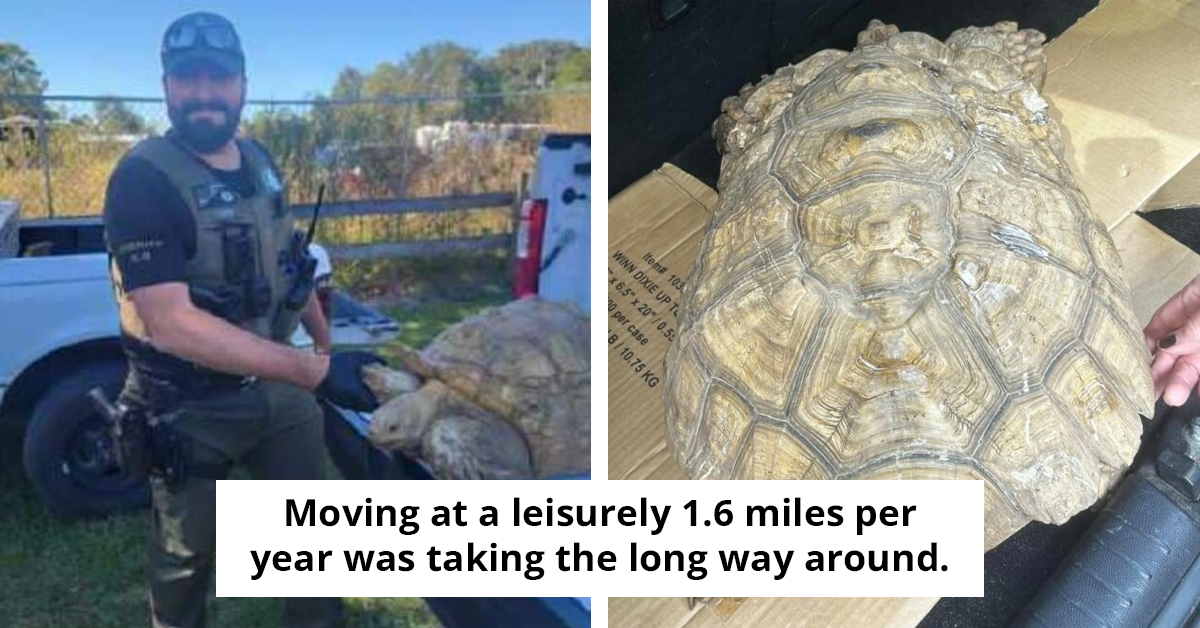Woman Uncovers Shocking Animal Hoarding Operation At Local Shelter After Being Repeatedly Rejected As Cat Adoption Candidate
Our narrator (Original Poster) grew up in a house filled with furry friends, so she knew the joy of cat companionship all too well. However, after moving away to attend college, leaving her beloved family pets behind was a tough but necessary choice.
It didn’t take long for anxiety and homesickness to begin weighing heavily on her. Even the presence of her significant other didn’t help. There was only one antidote—a new cat.
Luckily, OP’s partner loved cats just as much as she did. The search for a senior cat from a local shelter seemed like the perfect solution, so the couple sprang into action.
When their adoption attempts were repeatedly met with rejections, OP was forced to march down to the local shelter to find out why. Not to toot her own horn, but she was the ideal cat parent, so it made no sense.
She hoped that a face-to-face conversation might reveal what was lacking in her applications, but she got a real shocker. The lady pointed to a question on the form: "What would make you give up a pet?"
OP’s answer stated she’d only do that if she were to die and no immediate friends or family could take it in. Apparently, this was considered highly irresponsible, as good candidates should have more concrete plans for such a dire scenario.
At this point, OP could no longer hold back. She pointed out that such unreasonable criteria were likely why the shelter was bursting at the seams with senior cats who were at death’s door.
She went on to berate the lady for denying the poor felines the chance to live out their days in the comfort of a loving home. The shelter lady immediately burst into tears and had OP shuffled out of the premises.
Who was the AH in this situation?
The story in detail

OP’s love for cats started from childhood and she could not take anyone with her when leaving home.
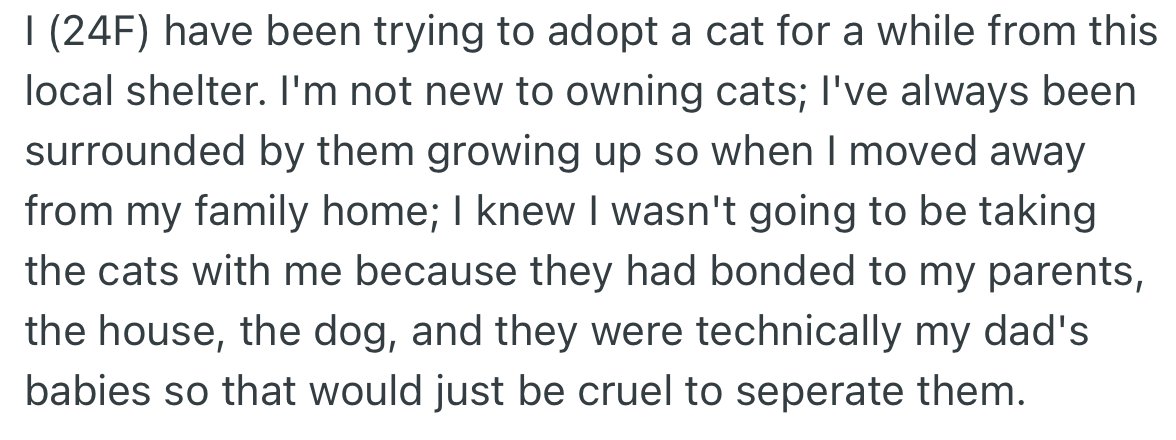
Understanding the Roots of Animal Hoarding
Animal hoarding is a complex psychological issue often rooted in deep-seated emotional problems. Research suggests that individuals who engage in hoarding behaviors typically struggle with attachment issues, often stemming from unresolved trauma or mental health disorders. A study published in the American Journal of Psychiatry found that many hoarders display symptoms of obsessive-compulsive disorder (OCD) or severe anxiety.
These individuals often experience a profound sense of loneliness and use animals as a substitute for human relationships, which can lead to the accumulation of pets beyond their ability to care for them.
OP moves out of home to live closer to her school. Although she lives with her partner, she is confident that having a cat around will relieve her of her ailment.

With no feedback from her request to adopt a cat, OP decided to visit the shelter in person. Surprisingly, she discovered her application had been rejected because of a section she answered incorrectly.
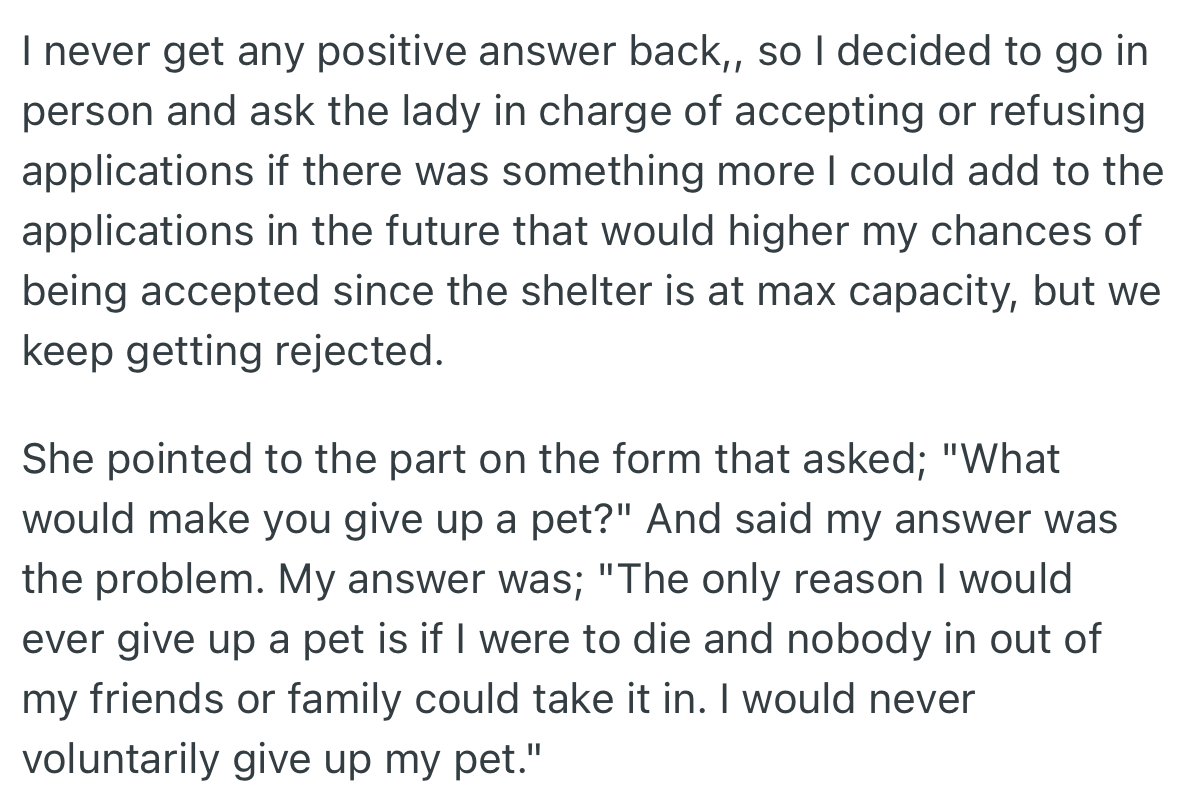
Understanding the psychological mechanisms behind animal hoarding can help communities develop more effective interventions. A clinical psychologist specializing in animal hoarding notes that many hoarders genuinely believe they are providing a necessary service to the animals and struggle with feelings of guilt and shame when confronted.
Interventions that focus on building self-esteem and addressing underlying mental health issues are critical. Studies show that without addressing these psychological components, the likelihood of relapse remains high.
OP could not understand why the reply she provided was wrong; however, she tried to explain her reasoning to the shelter attendant. OP’s explanation was not accepted, which made her even more surprised.
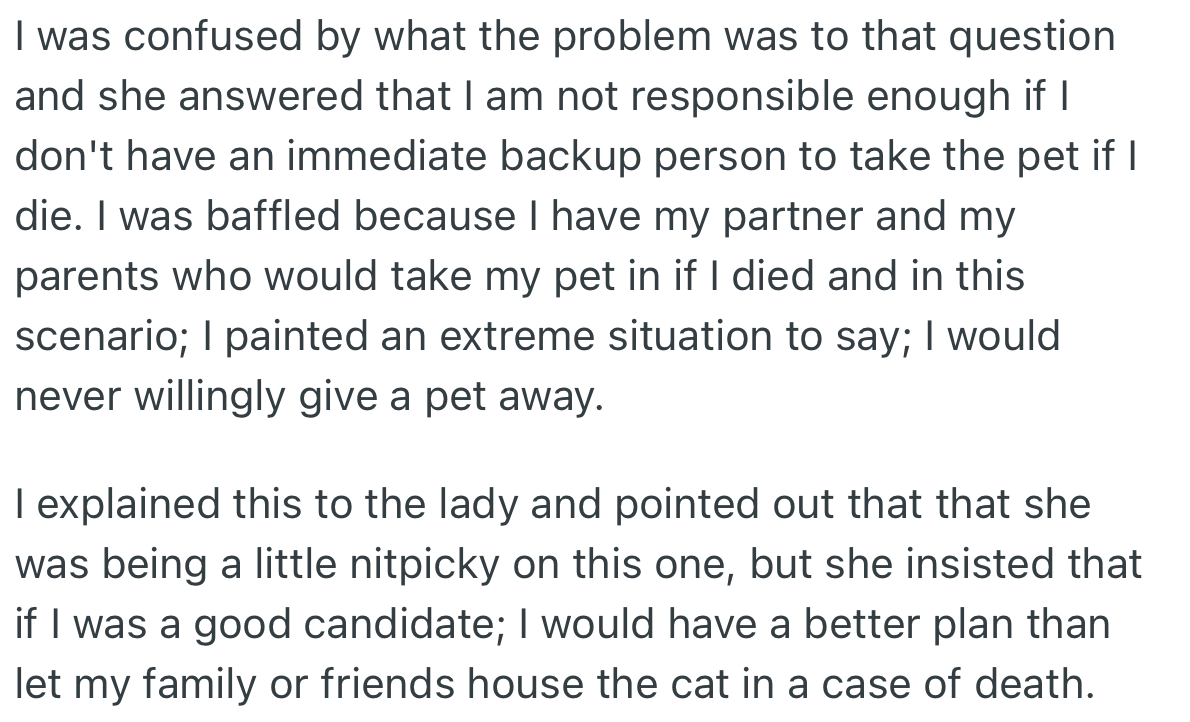
OP got upset by the words of the shelter attendant and lashed out at her. This made the lady cry and she called a coworker who asked OP to leave.
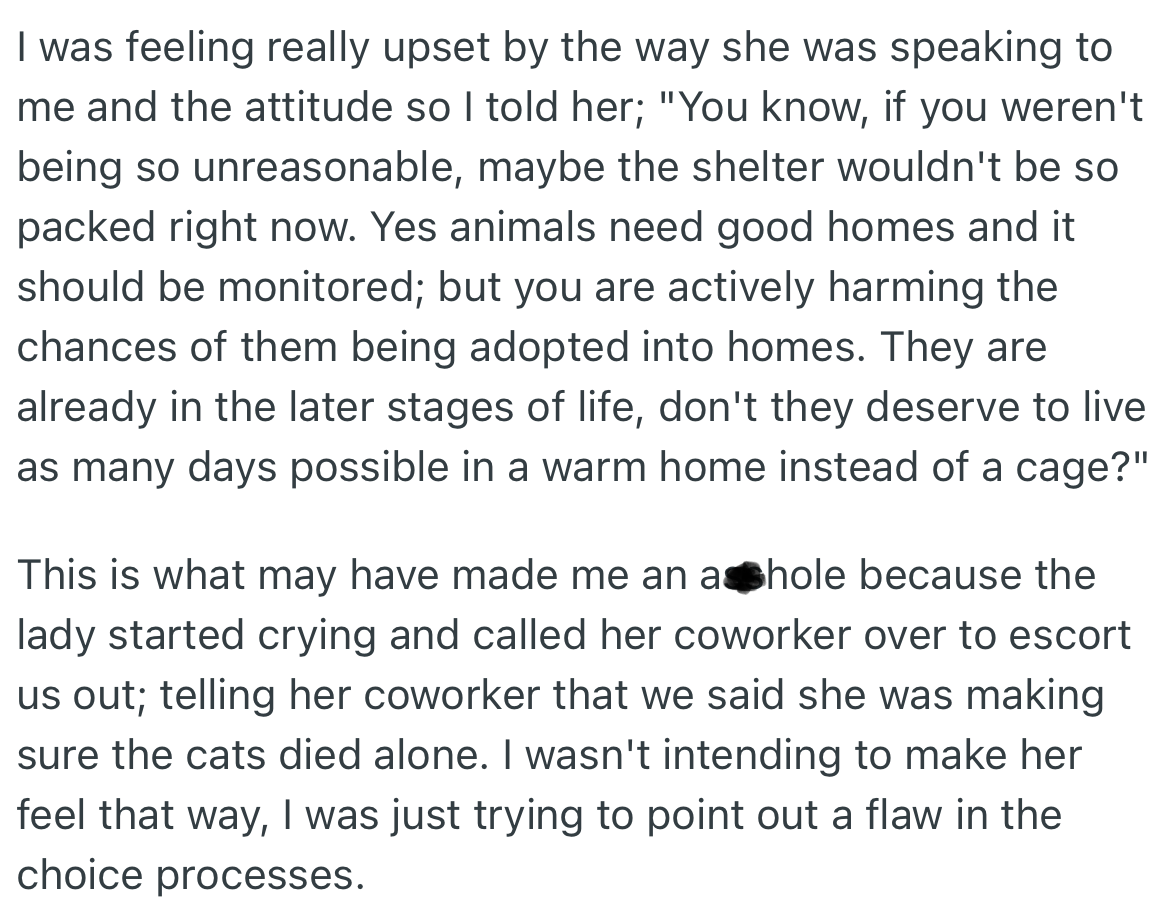
The Role of Community in Addressing Hoarding Situations
Community awareness and education are essential in addressing animal hoarding effectively. Programs that promote responsible pet ownership and provide mental health resources can significantly reduce the prevalence of such situations. A community-based approach that includes therapy options for the individuals involved, alongside animal welfare initiatives, has been shown to yield better outcomes.
Additionally, training for shelter staff on recognizing signs of hoarding can lead to earlier interventions, preventing situations from escalating into crisis.
The shelter lady denied OP’s application due to her attitude, which left her more confused. However, OP’s partner felt the attendant was suspicious and advised her not to take the incident to heart.

OP has been asking questions of other pet owners as she is certain she wrote the truth on her application and provided adequate references in case of an emergency.
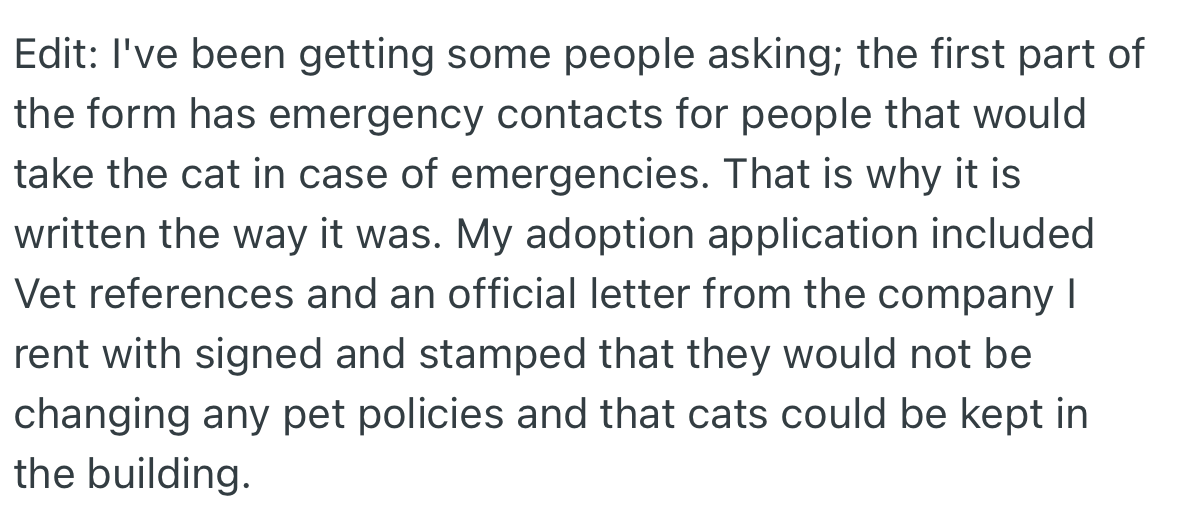
Research highlights the importance of empathy in addressing hoarding behaviors. Dr. Susan David, an emotional agility expert, states, "Understanding the emotional struggles of individuals is crucial in fostering change and healing." Her insights emphasize that compassion-driven interventions yield more successful outcomes than punitive measures. This approach not only aids the individuals involved but also protects the animals they are hoarding. Creating a supportive environment can encourage positive change and reduce the stigma associated with mental health issues, as noted on her professional website susandavid.com.
From OP’s investigation, she discovered that the owner of the shelter was a repeat offender for animal hoarding.
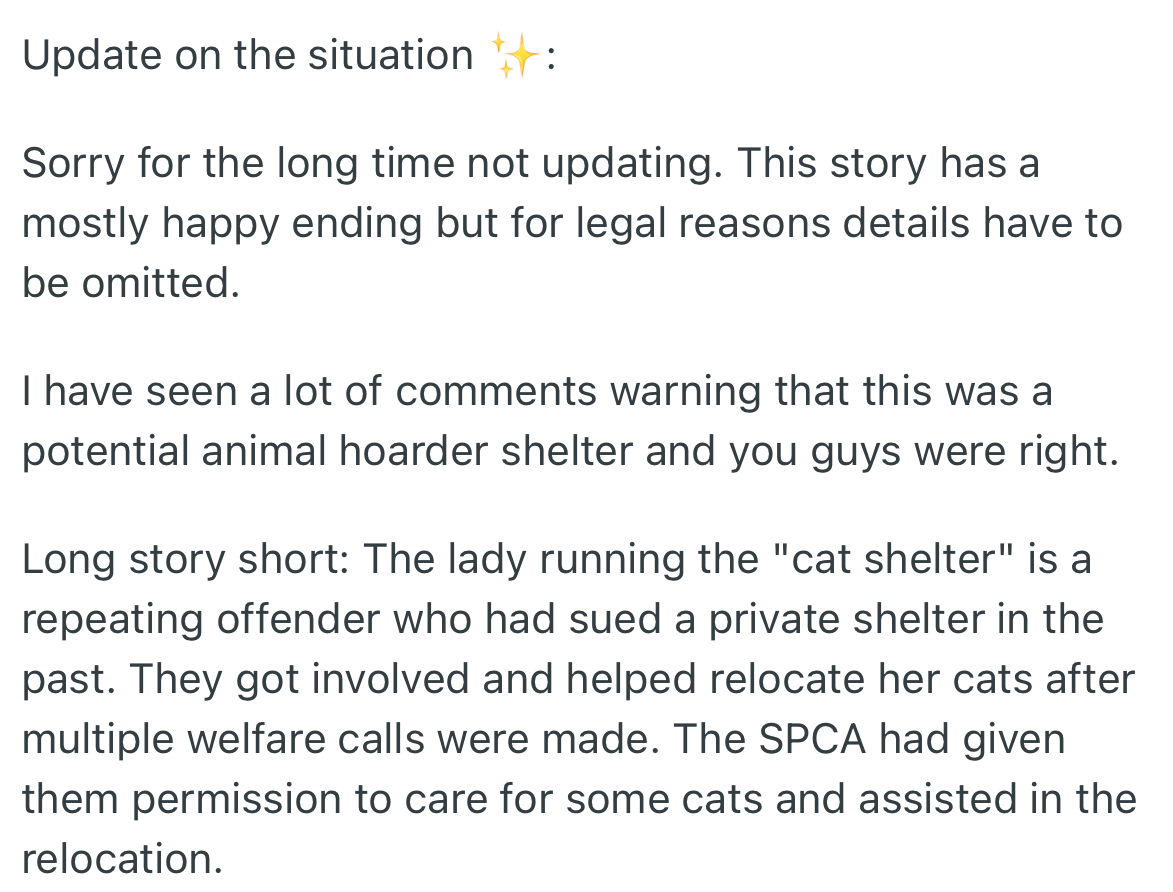
Since her application to adopt a cat was rejected, OP decided to contact another shelter and discovered that they had bad blood with the previous shelter. After proper investigations, the previous shelter was shut down.

In the end, OP’s persistence paid off. After being rejected by the questionable shelter, she connected with a reputable one and discovered that the "shelter" she visited was run by a notorious animal hoarder.
Thanks to multiple welfare calls and the intervention of authorities, the cats were relocated to proper care. Hurray!
What do you think about this story? Let us know in the comments.
Check out some interesting comments below:
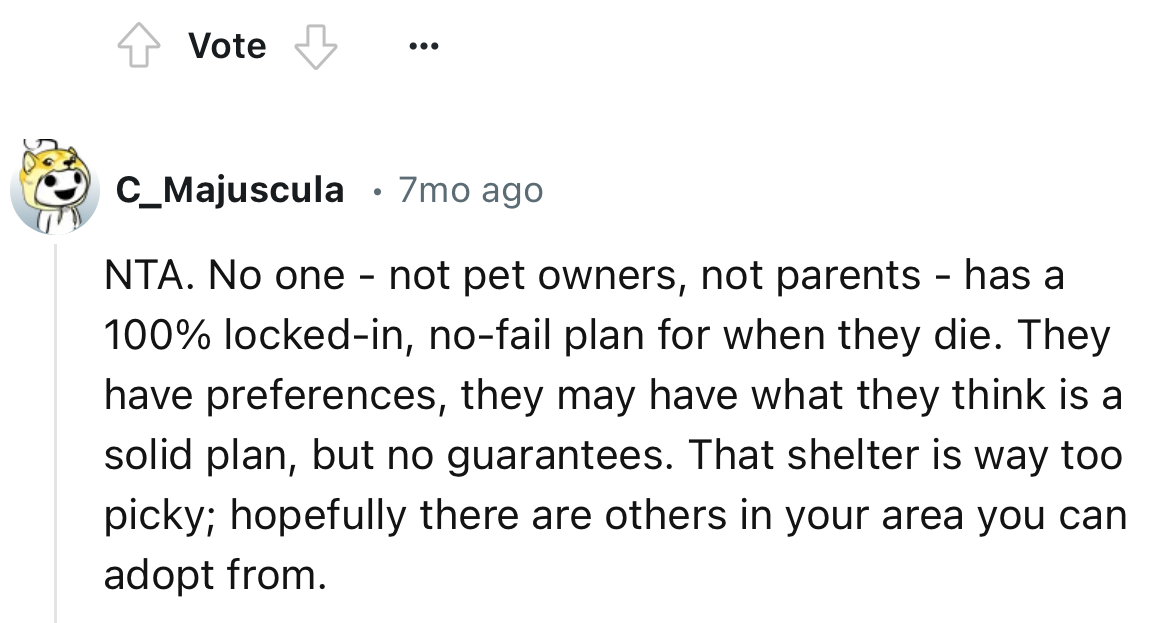
“Your fiancé is correct that it is fishy. It is very fishy.”
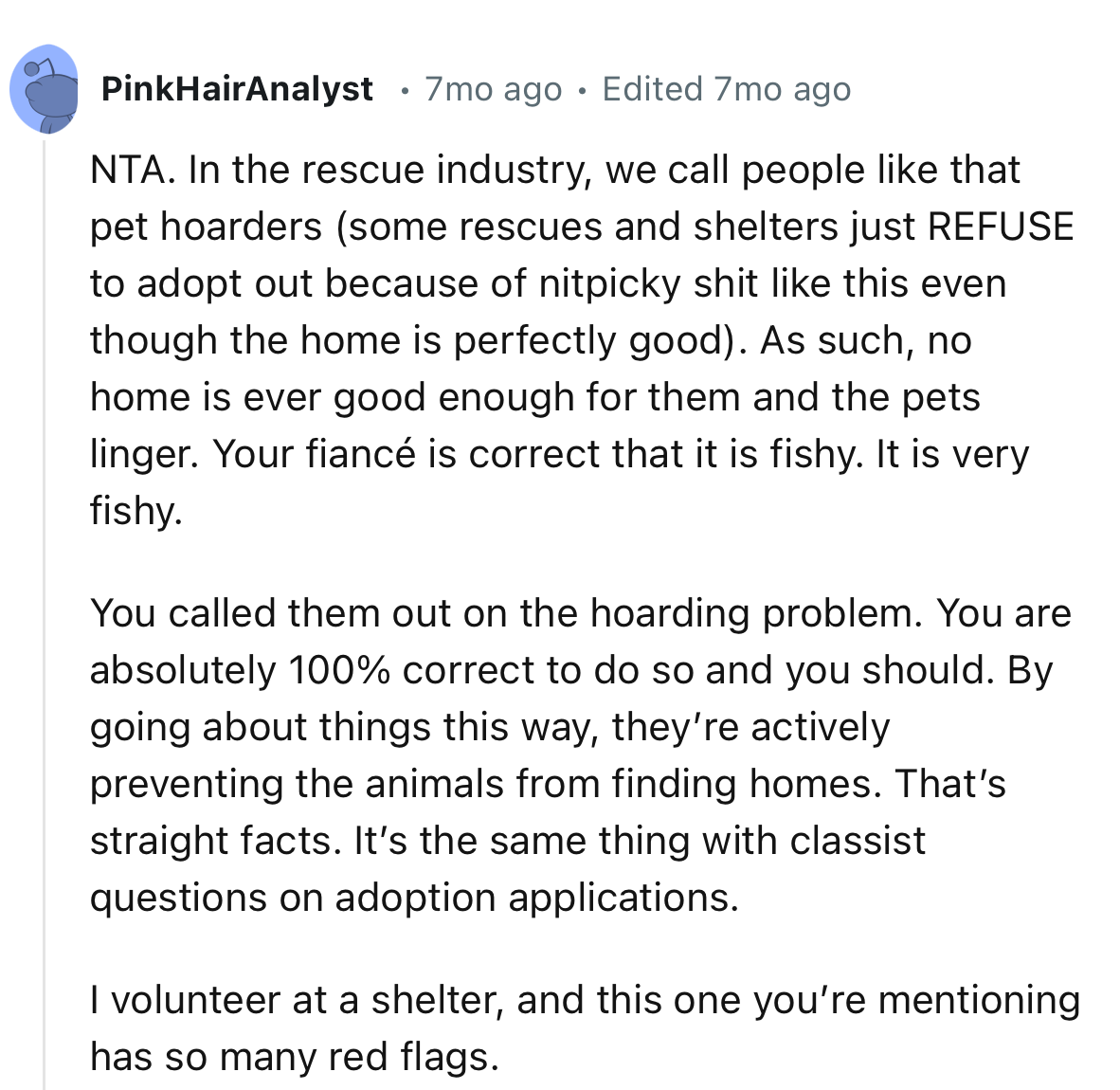
“I think that was an unnecessary answer you put on the form. You didn't even say you had backup family that could take it in if you were to pass.“

Psychological Analysis
This case illustrates the profound emotional complexities that underlie animal hoarding behaviors. Often, individuals in these situations are not merely neglectful; they are struggling with deep-seated psychological issues that require understanding and professional intervention.
Analysis generated by AI
Analysis & Alternative Approaches
In conclusion, animal hoarding is a multifaceted issue that requires a compassionate and informed approach. By addressing the psychological factors at play, communities can better support individuals in crisis and protect vulnerable animals. Recognizing the signs and providing resources can create a more humane and effective response to these situations.
